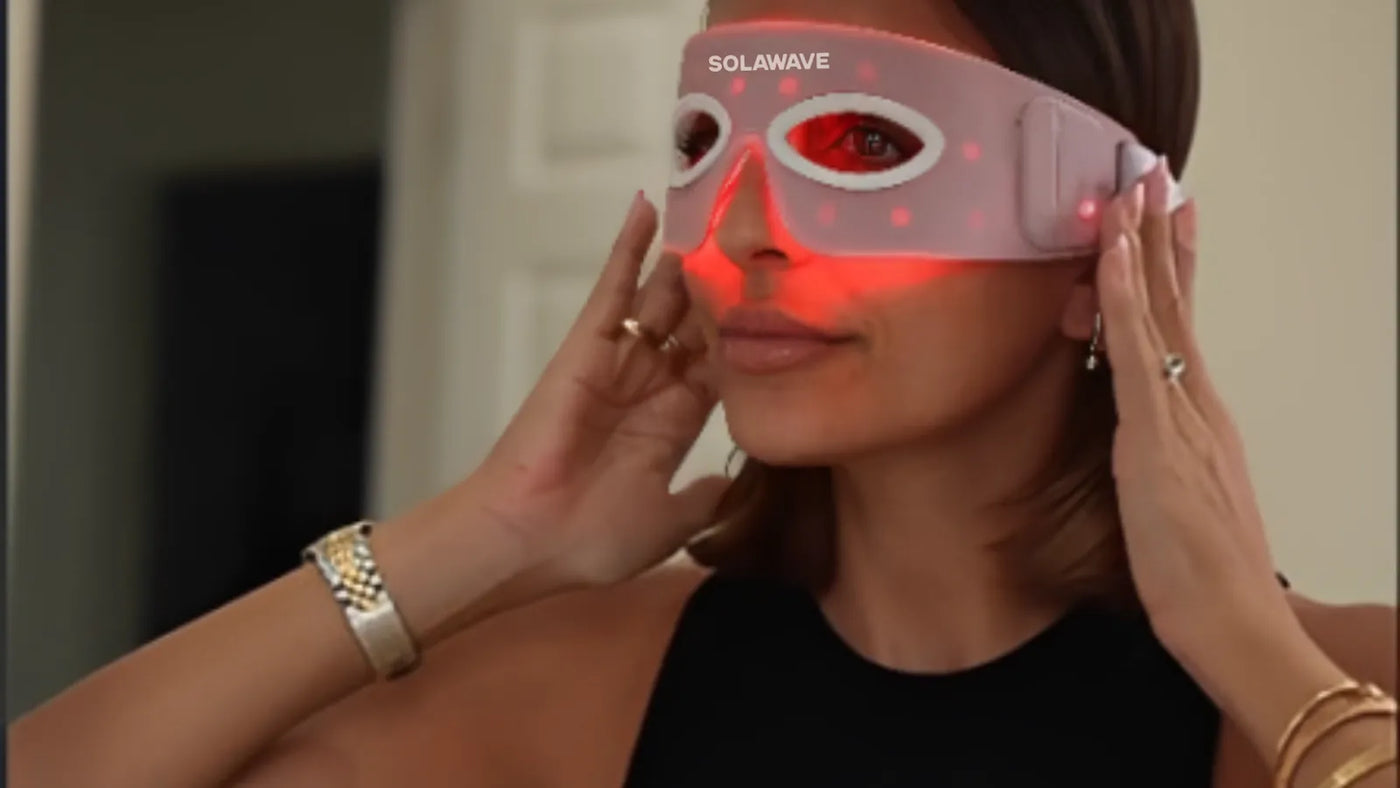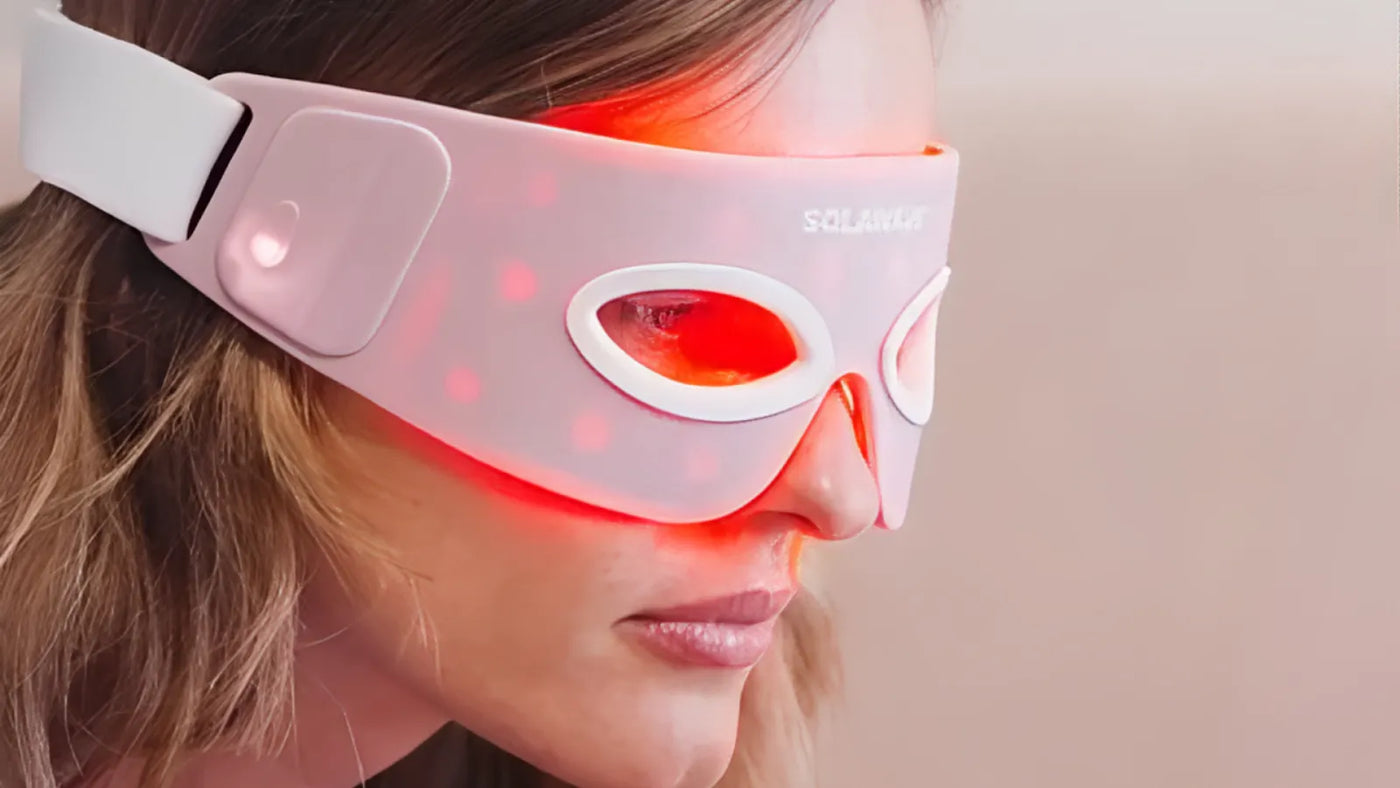

Red Light Therapy for Hair Growth: Can It Help?
Hair loss is a common experience that affects millions of people worldwide, impacting not just your appearance but also your confidence and overall quality of life. Whether you’re noticing a gradual thinning or more sudden patches, the emotional toll can be significant. Many people find themselves searching for answers and solutions, hoping to restore their hair and regain a sense of normalcy.
In recent years, there’s been a surge of interest in alternative and non-invasive approaches to hair restoration. Among these, red light therapy has gained attention as a possible way to support hair growth. You may have seen devices advertised online or heard about people trying red light therapy at home or in clinics. The idea of using light to potentially stimulate your hair follicles is intriguing, especially if you’re looking for options beyond medications or surgical procedures.
However, it’s crucial to understand from the outset that red light therapy is not a cure or treatment for alopecia, nor is it a solution for any medical hair-loss condition. While some individuals may report positive experiences, the scientific evidence is still evolving, and results can vary widely.
This article will guide you through what red light therapy is, how it’s thought to work, and what current research says about its potential for hair growth. You’ll also learn about proven treatments for hair loss, such as follicular transplants and hormone therapies, so you can make informed decisions about your options. Throughout, we’ll emphasize the importance of realistic expectations and consulting with healthcare professionals before starting any new approach.
What Causes Hair Loss?
Hair loss can happen for many reasons — the most common causes of hair loss include genetics, hormonal changes, stress, certain medical conditions, medications, and the natural aging process.
Genetics play a significant role in hair loss, especially in conditions like androgenetic alopecia, which is often referred to as male or female pattern baldness. This type of hair loss is hereditary and tends to progress gradually over time, usually following a recognizable pattern such as a receding hairline or thinning at the crown.
Hormonal changes are another major factor. Shifts in hormone levels due to pregnancy, childbirth, menopause, or thyroid problems can trigger temporary or permanent hair loss. For some, hormonal imbalances can disrupt the normal hair growth cycle, leading to increased shedding or thinning.
Stress—both physical and emotional—can also impact your hair. Significant life events, trauma, or ongoing anxiety may push hair follicles into a resting phase, resulting in noticeable shedding. This condition, known as telogen effluvium, is usually temporary but can be distressing.
Certain medical conditions can cause hair loss as well. Autoimmune disorders like alopecia areata prompt the body’s immune system to attack hair follicles, leading to patchy hair loss. Other illnesses, such as scalp infections or chronic diseases, may also contribute to thinning hair.
Medications are another common culprit. Drugs used for cancer, arthritis, depression, heart problems, and high blood pressure can have hair loss as a side effect. If you notice increased shedding after starting a new medication, it’s important to discuss this with your healthcare provider.
Finally, aging naturally affects hair growth. As you get older, hair tends to become thinner and less robust, and the rate of new hair growth slows down.
There are also several types of hair loss, each with its own causes and characteristics:
-
Androgenetic Alopecia: The most common form, linked to genetics and hormones.
-
Alopecia Areata: An autoimmune condition causing patchy hair loss.
-
Telogen Effluvium: Temporary shedding triggered by stress, illness, or hormonal changes.
-
Traction Alopecia: Hair loss caused by repeated pulling or tension on the hair, often from certain hairstyles.
-
Scarring Alopecia: Hair loss resulting from inflammation or scarring of the scalp.
The specific cause of hair loss should be identified before starting any treatment. A healthcare professional can help diagnose the underlying issue through a thorough evaluation, which may include a physical exam, medical history, and sometimes blood tests or scalp biopsies.
What Is Red Light Therapy?
Red light therapy, also known as low-level laser therapy (LLLT) or photobiomodulation, is a non-invasive treatment that uses specific wavelengths of red and near-infrared light to interact with your body’s cells. The therapy is designed to deliver low levels of light energy directly to the skin and underlying tissues, where it can be absorbed by the cells and potentially influence their function.
The science behind red light therapy centers on the idea that certain wavelengths of light—typically in the range of 600 to 1,000 nanometers—can penetrate the skin and reach the mitochondria, which are the energy-producing components of your cells. When these mitochondria absorb red or near-infrared light, they may become more efficient at generating adenosine triphosphate (ATP), the molecule that fuels cellular activity. This boost in cellular energy is thought to promote healing, reduce inflammation, and support tissue repair.
Red light therapy devices come in various forms, including handheld wands, panels, masks, and full-body beds. Treatment protocols can vary depending on the device and the intended use, but sessions typically last anywhere from a few minutes to half an hour, several times per week. The process is painless, and most people report feeling only a gentle warmth during treatment.
While red light therapy has gained attention for its potential to support hair growth, its most established uses are actually outside of hair restoration.
According to sources like the Cleveland Clinic and Healthline, red light therapy is commonly used to:
-
Improve skin appearance by reducing wrinkles, scars, redness, and acne
-
Reduce inflammation and pain in muscles and joints
-
Support recovery from injuries or surgery
Research into red light therapy for hair growth is ongoing, but it’s important to remember that the therapy is not a cure for any medical condition, including hair loss. Its effects can vary from person to person, and more studies are needed to fully understand its benefits and limitations. If you’re considering red light therapy, it’s always wise to consult with a healthcare professional to determine if it’s appropriate for your needs and to discuss other proven treatment options.
It’s also important to recognize that not all red light therapy devices are created equal. Each type of device is engineered specifically for its intended use, with differences in wavelength, light intensity, and design.
For example, red light devices made for skincare typically emit light at wavelengths and power levels optimized to target the surface layers of your skin, helping with issues like fine lines, wrinkles, or redness. In contrast, devices designed for muscle recovery or athletic performance use different wavelengths and higher intensities to penetrate deeper into tissues, aiming to reduce inflammation and support muscle repair. Because of these differences, the benefits of one device do not necessarily translate to another.
A red light mask intended for facial rejuvenation won’t deliver the same muscle recovery benefits as a panel built for athletic use, and vice versa. When considering red light therapy, choose a device that matches your specific goals.
Red Light Therapy for Hair Growth: The Science
Research into red light therapy for hair growth has grown in recent years, with scientists and clinicians exploring whether this non-invasive approach can make a meaningful difference for people experiencing hair thinning or loss. Most studies focus on how red light therapy might stimulate hair follicles, improve scalp health, and potentially slow down the progression of hair loss.
The proposed mechanism behind red light therapy’s effects on hair follicles centers on its ability to boost cellular energy. When red or near-infrared light penetrates the scalp, it is absorbed by the mitochondria in your cells. This absorption is thought to increase the production of adenosine triphosphate (ATP), which fuels cellular processes. With more energy available, hair follicle cells may function more efficiently, potentially supporting the growth phase of the hair cycle. Additionally, red light therapy may help increase blood flow to the scalp, delivering more oxygen and nutrients to hair follicles. Some researchers also suggest that red light can reduce inflammation in the scalp, creating a healthier environment for hair growth.
Several clinical studies have investigated the effects of red light therapy on hair growth, particularly in people with androgenetic alopecia (pattern hair loss). Some trials have reported modest improvements in hair density, thickness, and overall scalp coverage after consistent use of red light therapy devices. For example, participants in certain studies experienced increased hair counts and a reduction in hair shedding compared to those who used placebo devices. These results are promising and suggest that red light therapy may offer some benefit for individuals seeking to improve the appearance of thinning hair.
However, it’s important to approach these findings with caution. Many studies on red light therapy for hair growth have limitations, such as small sample sizes, short follow-up periods, and variations in device type and treatment protocols. There is also a lack of long-term data on the durability of results and the therapy’s effectiveness across different types of hair loss. Most importantly, while some people may see improvements, red light therapy has not been proven to cure alopecia or any other medical hair-loss condition. The scientific community agrees that more rigorous, large-scale research is needed before red light therapy can be considered a reliable or primary treatment for hair loss.
If you are considering red light therapy for hair growth, keep in mind that while some individuals may have noticed cosmetic improvements, results are not guaranteed, and the therapy should not be viewed as a substitute for medically recognized treatments.
What To Expect from Red Light Therapy
Red light therapy has established itself as a valuable tool in skincare, with research and user reports highlighting improvements in skin tone, reduction in fine lines and wrinkles, and enhanced complexion. Devices designed for skincare typically use wavelengths in the range of 630 to 680 nanometers, which are effective at penetrating the upper layers of the skin. This light energy supports healthy collagen production, reduces the look of inflammation, and supports the skin’s natural glow. Many users notice a brighter, smoother-looking complexion and a reduction in redness or irritation after consistent use.
Beyond skincare, red light therapy has also been shown to aid in muscle recovery and pain relief. Devices intended for these purposes often use slightly longer wavelengths, sometimes up to 850 nanometers, which can penetrate deeper into tissues. Clinical studies have demonstrated that red light therapy can help reduce muscle soreness, accelerate recovery after exercise, and decrease joint pain in conditions like arthritis. These benefits are well-documented and have led to the adoption of red light therapy in both sports medicine and physical therapy settings.
When it comes to hair growth, the evidence is less definitive. Some studies have explored the use of red light therapy devices—often using wavelengths between 630 and 670 nanometers—on the scalp to stimulate hair follicles. In certain cases, users have reported a thicker appearance of hair and a possible slowing of hair loss after several months of regular treatment. However, these results are not universal, and the degree of improvement varies widely from person to person. The most consistent findings suggest that red light therapy may help maintain existing hair and improve scalp health, rather than regrow hair in areas of complete loss. Parameters such as treatment frequency (often three to five times per week), session duration (typically 10 to 20 minutes), and the specific wavelength used all play a role in the outcomes observed.
Not everyone will see noticeable benefits from red light therapy for hair growth, and results—if any—tend to be modest.
Ultimately, while red light therapy offers proven benefits for skincare and muscle recovery, its role in hair growth remains an area of ongoing research. If you’re interested in trying red light therapy, focus on its established uses and approach hair growth claims with caution, prioritizing evidence-based treatments and professional guidance for your specific needs.
Proven Treatments for Hair Loss
When it comes to addressing hair loss, there are several proven treatments that have been thoroughly researched and are recognized by medical professionals. These options range from topical and oral medications to advanced surgical procedures and supportive therapies.
If you’re experiencing hair loss, it’s important to consult with a qualified healthcare provider or dermatologist. They can help you identify the underlying cause and develop a personalized treatment plan that combines proven therapies with supportive lifestyle changes.
Below, you’ll find an overview of the most effective and widely used treatments for hair loss, along with important considerations for each.
Medications: Minoxidil (Rogaine), Finasteride (Propecia), and Others
Medications are often the first line of defense against hair loss, with two of the most widely recognized options being minoxidil and finasteride. Minoxidil, available over the counter as a topical solution or foam, is FDA-approved for both men and women. It works by prolonging the growth phase of hair follicles and increasing blood flow to the scalp, which can help slow hair loss and, in some cases, promote regrowth. Finasteride, on the other hand, is a prescription oral medication approved for men. It works by blocking the conversion of testosterone to dihydrotestosterone (DHT), a hormone linked to hair follicle shrinkage. Both medications require consistent, long-term use to maintain results, and discontinuing them often leads to a return of hair loss. Side effects are possible, including scalp irritation with minoxidil and sexual side effects with finasteride.
Hormone Therapies
Hormone therapies can be effective for individuals whose hair loss is related to hormonal imbalances, such as those caused by polycystic ovary syndrome (PCOS) or menopause. These treatments may include oral contraceptives, anti-androgens like spironolactone, or hormone replacement therapy. By regulating hormone levels, these therapies can help slow or stabilize hair loss. However, hormone therapies are not suitable for everyone and may carry risks such as blood clots, changes in blood pressure, or other side effects.
Follicular Unit Transplantation (FUT) and Follicular Unit Extraction (FUE)
Surgical hair restoration offers a more permanent solution for some individuals. Follicular Unit Transplantation (FUT) and Follicular Unit Extraction (FUE) are the two primary techniques. FUT involves removing a strip of scalp from the back of the head, dissecting it into individual follicular units, and transplanting them to thinning or balding areas. FUE, in contrast, involves extracting individual hair follicles directly from the scalp and implanting them where needed. Both procedures can produce natural-looking results, but they require skilled surgeons and a significant recovery period. Risks include infection, scarring, and the possibility of uneven results. While these procedures can be highly effective, they are also costly and may not be suitable for everyone.
Platelet-Rich Plasma (PRP) Therapy
Platelet-Rich Plasma (PRP) therapy is a minimally invasive treatment that uses your own blood to stimulate hair growth. The process involves drawing a small amount of your blood, processing it to concentrate the platelets, and then injecting the PRP into your scalp. Platelets contain growth factors that may help repair and rejuvenate hair follicles. Some studies suggest PRP can improve hair density and thickness, especially when used in combination with other treatments. However, results can vary, and the evidence is still emerging. PRP therapy is generally safe, but it may require multiple sessions and ongoing maintenance to sustain results.
Lifestyle and Nutritional Approaches
Lifestyle and nutrition play a supporting role in maintaining healthy hair. A balanced diet rich in vitamins and minerals—such as iron, zinc, vitamin D, and biotin—can help support hair growth and overall scalp health. Managing stress through relaxation techniques, exercise, and adequate sleep is also important, as chronic stress can contribute to hair shedding. Good scalp care, including gentle washing and avoiding harsh treatments or tight hairstyles, can help minimize damage and breakage. While these approaches may not reverse significant hair loss on their own, they are essential components of a comprehensive hair health strategy and can enhance the effectiveness of other treatments.
Conclusion
Hair loss can be a challenging and emotional experience, but you have a range of proven options to help manage it and support your confidence. While red light therapy has shown promise for skin health and muscle recovery, its benefits for hair growth remain limited and are not backed by strong scientific evidence.
For the best results, focus on medically recognized treatments and work closely with a healthcare professional to develop a plan tailored to your needs.
Sources:
-
Red Light Therapy: Benefits, Side Effects & Uses – Cleveland Clinic
-
Hair loss: Who gets and causes – American Academy of Dermatology Association
-
Low-level laser (light) therapy (LLLT) for treatment of hair loss – NIH
-
FDA-Approved Treatments for Hair Loss – U.S. Food & Drug Administration
-
Platelet-Rich Plasma (PRP) Injections | Johns Hopkins Medicine





















